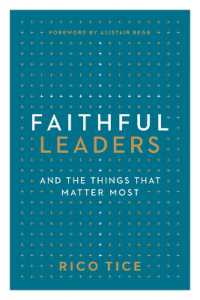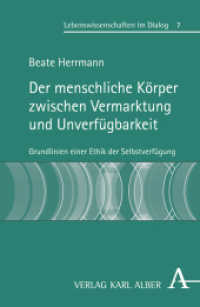Full Description
This comprehensive and systematic text approaches the Bible from a literary/historical perspective and studies it as a body of writing produced by real people who intended to convey messages to real audiences. Avoiding assessments of the Bible's truth or authority, the authors maintain a rigorously objective tone as they discuss such major issues as the forms and strategies of biblical writing, its actual historical and physical settings, the process of canon formation, the sources of the Pentateuch, and the nature of such biblical genres as prophecy, apocalypse, and gospel. In this edition, David Citino has joined the team of authors, and the new edition includes a new chapter on "Women in the Bible," by contributor Nicola Denzey, and a new appendix on modern approaches to the bible. The new edition also features new maps, timelines, expanded bibliographies, and updated material throughout.
Contents
To the Reader
1. The Bible as Literature
2. Literary Forms and Strategies in the Bible
3. Ancient Near Eastern Literature and the Bible
4. The Bible and History
5. The Physical Setting of the Bible
6. The Formation of the Canon
7. The Composition of the Pentateuch
8. The Prophetic Writings
9. The Wisdom Literature
10. The Apocalyptic Literature
11. Judaism in the Intertestamental Period
12. The Hellenistic Background of the New Testament
13. Apocrypha and Pseudepigrapha: The Outside Books
14. The Gospels
15. Acts and the Letters
16. The Text of the Bible
17. Translating the Bible
18. The Religious Use and Interpretation of the Bible
19. Women and the Bible
Appendix 1: The Name of Israel's God
Appendix 2: Writing in Biblical Times
Appendix 3: Palestine in the Intertestamental Period
Appendix 4: Varieties of Biblical Criticism
Glossary of Literary Terms Timeline: 1000 B.C.E.-1611 C.E.
Maps
Index








